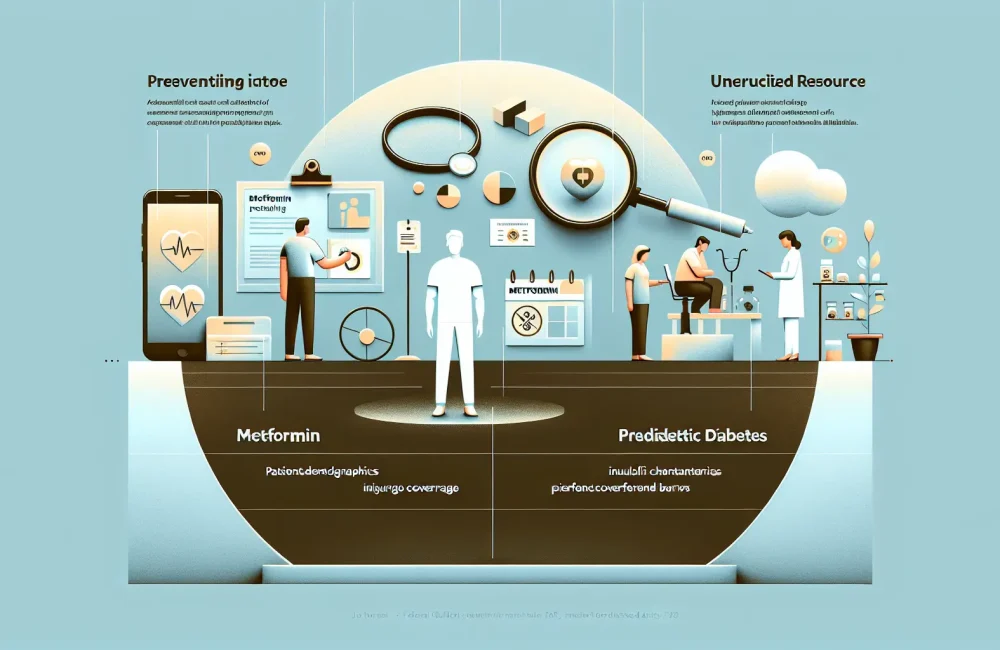By CAFMI AI From JAMA
Early Diagnosis and Foundational Lifestyle Interventions
Effective management of type 2 diabetes mellitus (T2DM) in adults begins with timely and accurate diagnosis. The article underscores the importance of screening and diagnosis through standardized criteria, which include fasting plasma glucose levels, oral glucose tolerance tests, and glycated hemoglobin (HbA1c) measurement. Early detection is critical as it allows clinicians to initiate interventions that can prevent or delay the onset of serious complications such as cardiovascular disease, nephropathy, neuropathy, and retinopathy. Fasting plasma glucose levels of 126 mg/dL or higher, a 2-hour glucose tolerance test showing 200 mg/dL or higher, or an HbA1c of 6.5% or above confirm the diagnosis of T2DM. Clinicians are encouraged to integrate these assessments into routine care, especially for patients with risk factors like obesity, family history of diabetes, and metabolic syndrome. Once diagnosed, lifestyle interventions remain the cornerstone of managing T2DM. The article details evidence-based recommendations emphasizing dietary modification, increased physical activity, and sustained weight management. A balanced diet rich in whole grains, vegetables, lean proteins, and limited in processed sugars and saturated fats is advised. Regular physical activity, aiming for at least 150 minutes of moderate aerobic exercise per week, helps improve insulin sensitivity and glucose control. Weight loss, particularly in patients with obesity, is noted to significantly improve glycemic parameters and reduce insulin resistance. Patient education and motivational strategies to support adherence to lifestyle changes are recognized as vital components that enhance outcomes. These non-pharmacologic measures set the foundation upon which all pharmacologic treatments build, highlighting the clinical imperative to address lifestyle factors early and consistently in primary care settings.
Pharmacologic Treatment Strategies and Individualized Care
When lifestyle changes are insufficient to maintain glycemic targets, pharmacologic therapy must be initiated. The article affirms metformin as the first-line medication for most patients with T2DM due to its efficacy, safety profile, cost-effectiveness, and benefits beyond glucose lowering, including modest weight reduction and potential cardiovascular protection. For patients who do not achieve glycemic control on metformin alone, combination therapy is tailored based on comorbidities, patient preferences, and risk profiles. The class of sodium-glucose cotransporter 2 (SGLT2) inhibitors is highlighted for its dual role in lowering blood glucose and reducing the risk of heart failure and nephropathy, making these drugs especially valuable for patients with established cardiovascular disease or chronic kidney disease. Glucagon-like peptide 1 (GLP-1) receptor agonists are another important option, notable for their effects on weight loss and cardiovascular risk reduction. Insulin therapy remains essential for patients with advanced disease or significant hyperglycemia unresponsive to oral agents. The article stresses the importance of individualized glycemic targets, particularly for older adults and those with multiple comorbidities, to balance benefits and risks such as hypoglycemia. It also calls attention to regular monitoring to guide therapy adjustments and detect complications early. This nuanced approach promotes optimized outcomes and patient safety in diverse clinical scenarios encountered in practice.
Clinical Implications, Emerging Therapies, and Practice Integration
The article provides valuable insights into integrating evolving evidence into clinical practice. Cardiovascular risk reduction remains a key focus in managing patients with T2DM due to their increased risk for myocardial infarction, stroke, and other vascular complications. Clinicians are urged to adopt a comprehensive approach that includes glycemic control along with management of blood pressure, lipids, and lifestyle factors. Regular screening for diabetes-related complications—such as diabetic retinopathy, nephropathy, peripheral neuropathy, and foot ulcers—is critical for early intervention and prevention of disability. Counseling points include educating patients about the chronic nature of T2DM, importance of medication adherence, dietary advice, and recognition of red flags signaling disease progression or acute complications. Follow-up workflows in primary care should be structured, with routine visits focusing on metabolic control, complication screening, and psychosocial support. The article briefly addresses promising emerging therapies targeting novel pathophysiologic pathways, reflecting ongoing research aimed at improving therapeutic options. These advancements signal a future of more personalized medicine for T2DM. For healthcare professionals in the U.S., aligning practice with these comprehensive guidelines can improve patient outcomes and reduce healthcare burdens associated with poorly controlled diabetes. Overall, the article equips clinicians with actionable knowledge to enhance diagnosis, management, and patient-centered care coordination in type 2 diabetes.
Read The Original Publication Here






